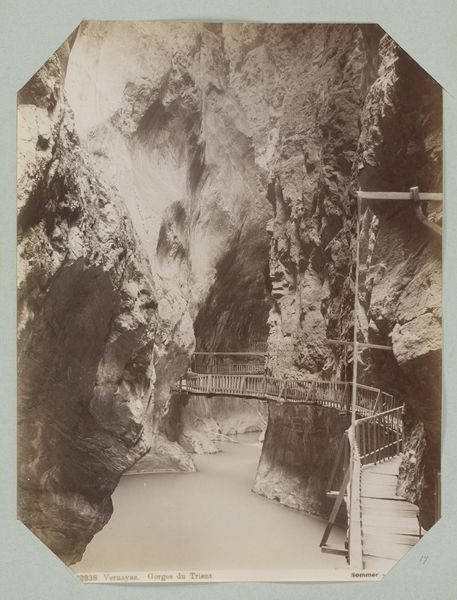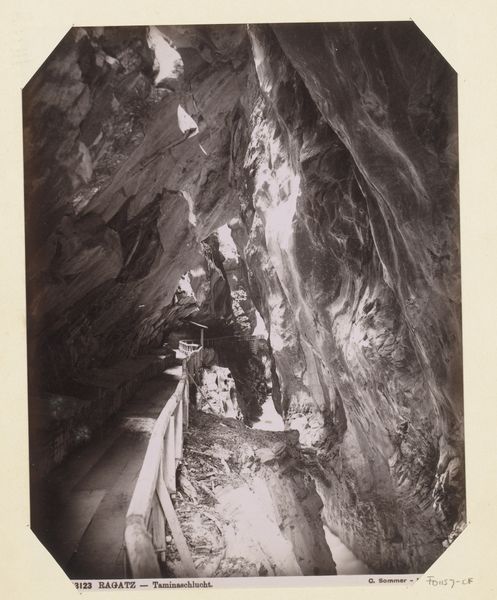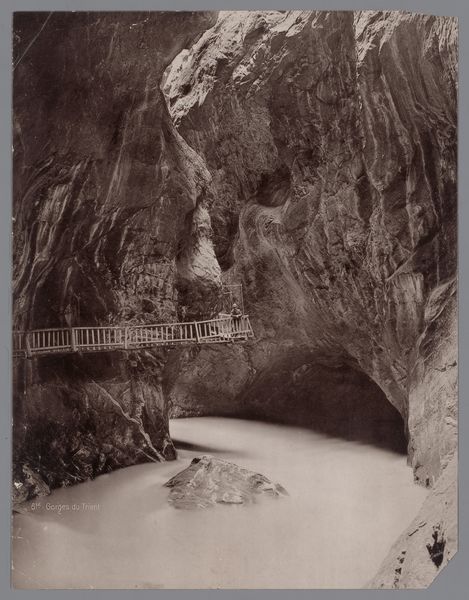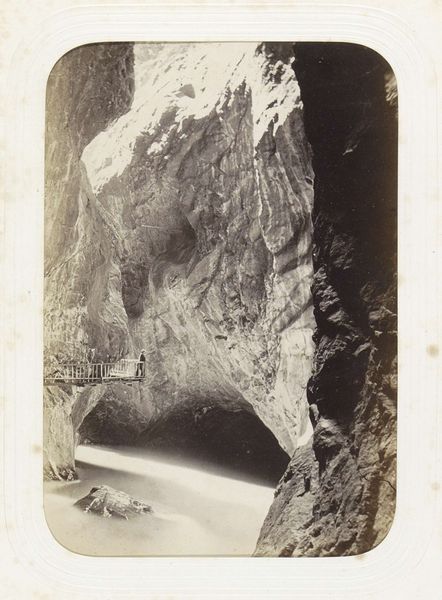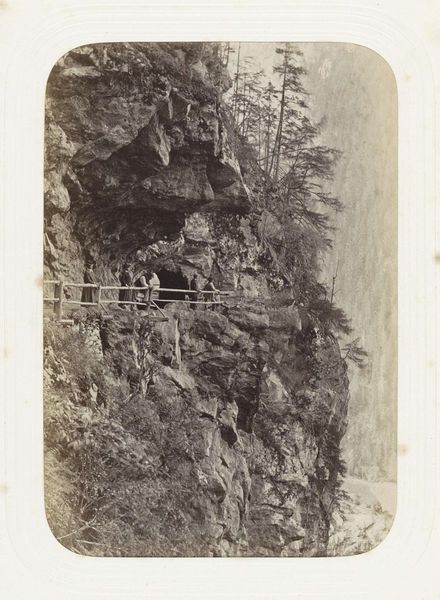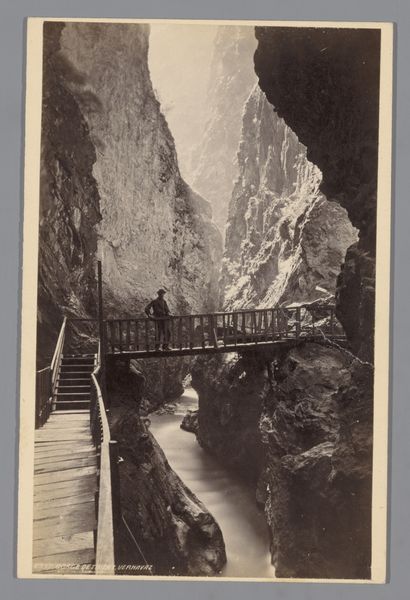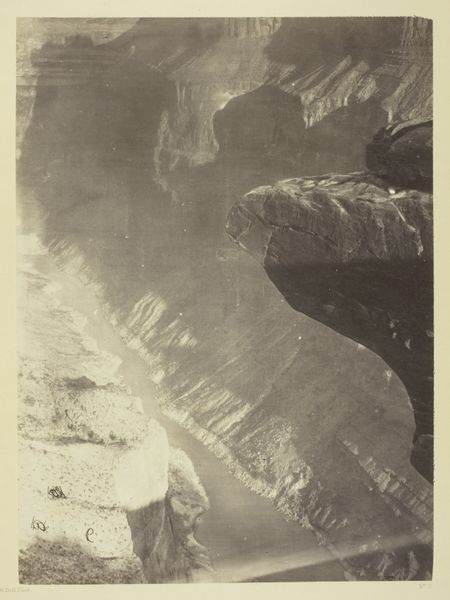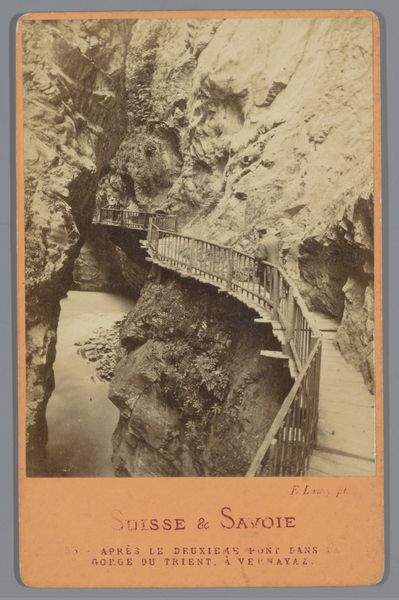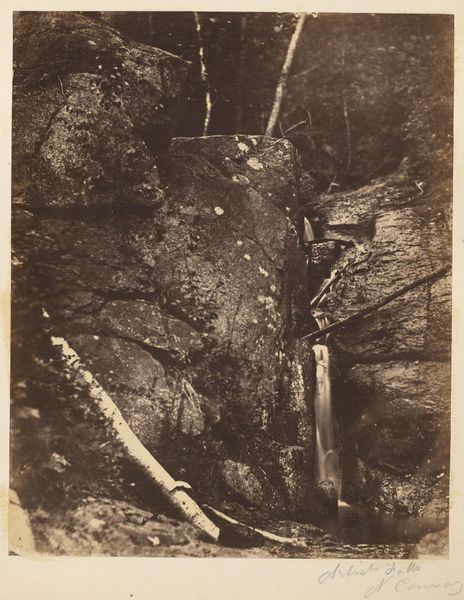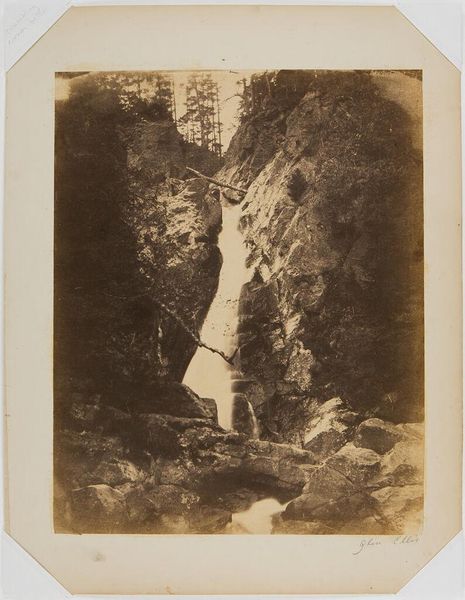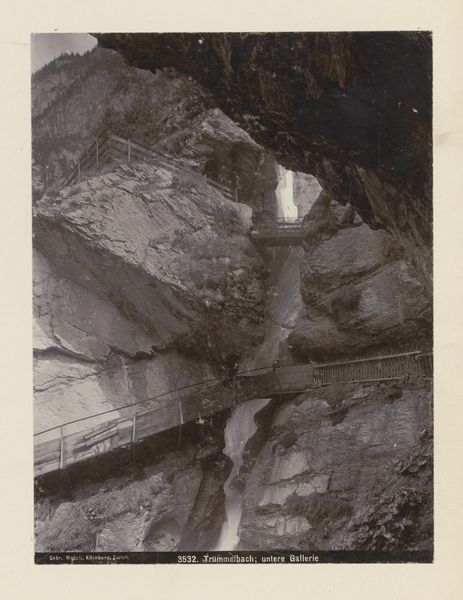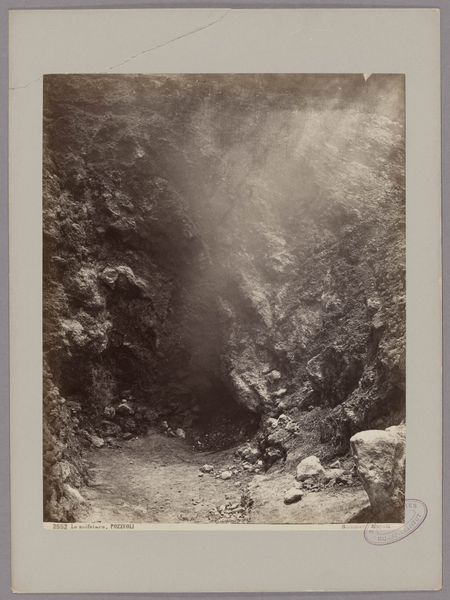
Man op een pad langs een water vermoedelijk in de Gorges du Trient bij Valais before 1880
0:00
0:00
Dimensions: height 160 mm, width 108 mm
Copyright: Rijks Museum: Open Domain
Curator: So, here we have an early photogram, sometime before 1880, by Auguste Garcin. The title is rather a mouthful, "Man op een pad langs een water vermoedelijk in de Gorges du Trient bij Valais"—roughly, "Man on a path along a water, presumably in the Gorges du Trient near Valais". Editor: My initial reaction is that it is dizzying. Looking down that gorge almost gives me vertigo, that rush of whitewater churning beneath the frail looking wooden walkway. Curator: It does feel precipitous, doesn't it? Garcin’s choice to use the photogram technique emphasizes the texture of the rocks. The human figure seems insignificant against the scale of the landscape. Makes me ponder our brief time on Earth. Editor: Exactly! And consider that walkway, itself a feat of human engineering—all the lumber, the labor of cutting, hauling, and assembling... It's all meant to access nature, to make it safely consumable. But what impact did all this work have on the landscape? The making is invisible here. Curator: Oh, it certainly speaks to the Hudson River School style as it presents this romantic ideal, right? Though instead of painting the picturesque view, he's documenting the...experience of seeing. The figure in the scene invites us to project ourselves there, walking in his footsteps. It also suggests Garcin saw beauty in even dangerous nature. Editor: But did he think about the working class person or people who created the scene with this wooden walk-through path in that very moment? To appreciate the wild means constructing the wild, so it seems. Photograms at this time were mass reproducible; the act of sharing changed not just the image but, potentially, also the very physical location represented in it. Curator: A really wonderful question! This pre-industrialized path is made safe so as to show the landscape to more people and to also allow them appreciate and see its grandest self. Now, thinking about this for a moment, did Garcin capture an instant, or was there some romantic narrative unfolding within it? Editor: And what, I wonder, will be left when all this disappears in the face of an indifferent natural process, for later archeologists, whether physical constructions such as bridges or art like these prints?
Comments
No comments
Be the first to comment and join the conversation on the ultimate creative platform.
